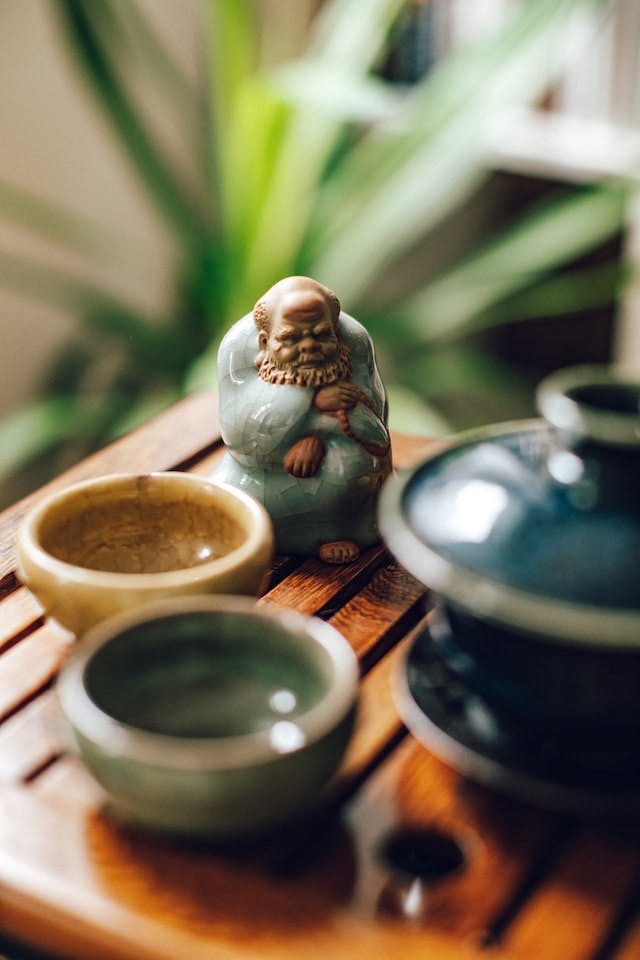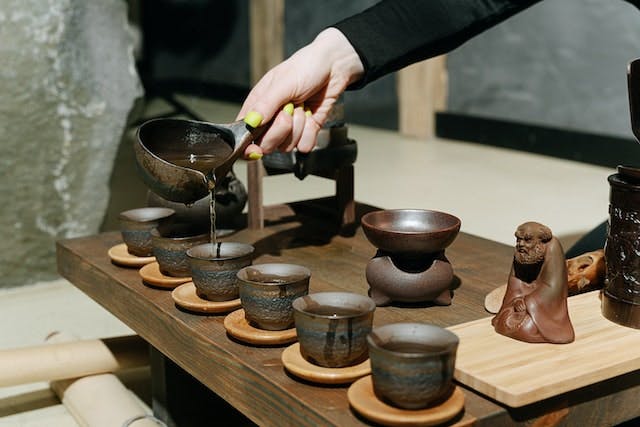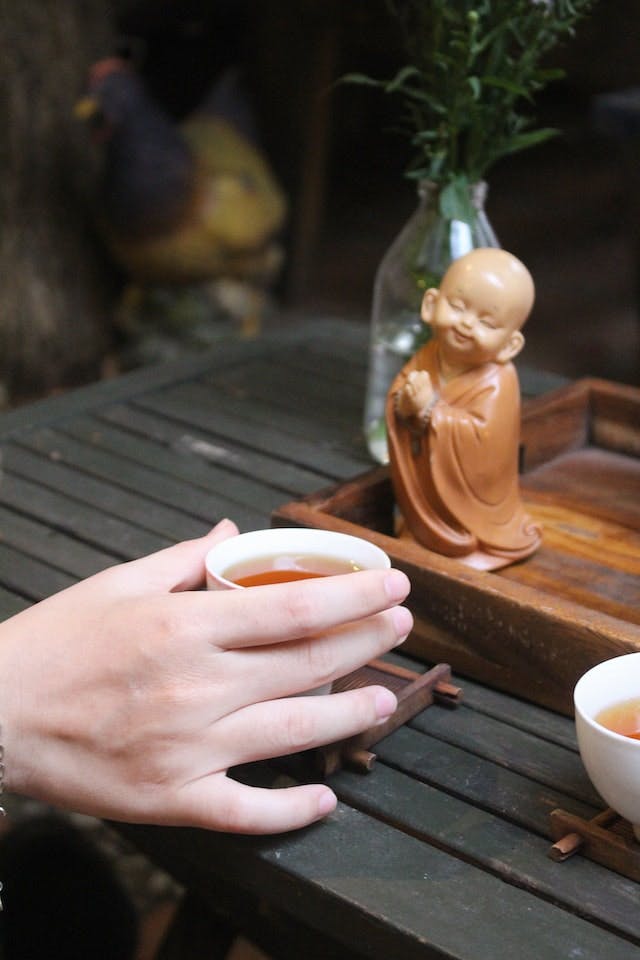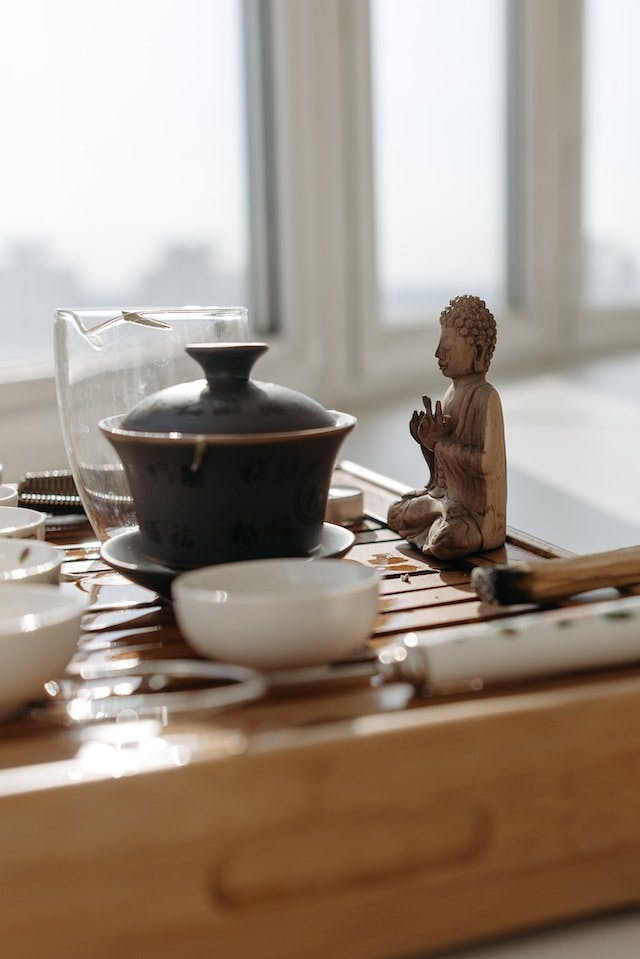What is a Tea Pet? A Complete Guide to These Tea Partners
 Owner: Photo by ROMAN ODINTSOVGaiwan, Tea Cups and Tea Pet on Wooden Board
Owner: Photo by ROMAN ODINTSOVGaiwan, Tea Cups and Tea Pet on Wooden Board
What is a Tea Pet?
If you're wondering what a tea pet is, think of it as a miniature clay sculpture that shares in your tea-drinking journey. These figures, usually crafted from the same clay as Yixing teapots, are a staple of traditional Chinese tea ceremonies.
When you brew your tea, you don't just pour for yourself and your guests—you pour a little on your tea pet too, 'nourishing' it over time. They’re called 'pets' because, like real pets, they require care and attention. Over time, tea pets develop a unique patina from the tea oils, adding to their character and charm.
Tea Pets vs Tea Animals: Is There a Difference?
The terms "tea pet" and "tea animal" are often used interchangeably, but is there a difference? Generally, all tea animals are tea pets, but not all tea pets are tea animals.
The tea pets can take on any form, be it an animal, a mythical creature, or an abstract shape. However, the most popular tea pets tend to be animals, hence the frequent use of the term 'tea animals.' Regardless of their form, all tea pets serve the same purpose—to share in the joy and ritual of tea drinking.
Types and Designs of Tea Pets
 Owner: Photo by Ivan SamkovPerson Pouring Tea on Teacups
Owner: Photo by Ivan SamkovPerson Pouring Tea on Teacups
Traditional Types of Tea Pets: A Look into the Past
Historically, traditional tea pets were frequently made from the renowned Yixing clay, which is distinguished for its exquisite texture, heat-retention qualities, and porous nature. Because tea pets were an essential element of the tea ceremony, their forms were not picked at random. Rather, each represented a symbolic message or a blessing.
The Pixiu (a legendary creature for wealth and good luck), the three-legged toad (a symbol of fortune), and Chinese Zodiac animals were among the most popular shapes. Skilled artisans carefully sculpted, engraved, and polished each tea pet—a work of love and artistry that stands the test of time.
Modern Varieties of Tea Pets: Creativity Meets Tradition
Modern tea pets, in contrast to their traditional counterparts, exhibit a fusion of inventiveness and tradition. While many are still made of Yixing clay, you may also find tea pets made of porcelain, ceramic, and even glass.
The tea pet universe of today goes beyond symbolic animals and fantastical beings. You'll discover anything from abstract forms to miniature replicas of iconic places. This creative spurt hasn't diluted the tradition, but rather introduced a new dimension of interest and individuality to tea dogs.
 Owner: Photo by Ivy NguyenHand Holding Cup of Tea
Owner: Photo by Ivy NguyenHand Holding Cup of Tea
Exploring Unique Tea Pet Designs: From Animals to Abstracts
When it comes to tea pet designs, the sky's the limit! Animals continue to be a favored choice, with tea pets taking the shape of everything from koi fish (symbols of perseverance and strength) to roosters (harbingers of luck and fortune) and turtles (emblems of longevity).
If you're more inclined towards abstract forms, you'll be delighted by tea pets that seem to defy definition. Some boast sleek, modernist shapes, while others feature whimsical designs, their forms only limited by the artisan's imagination.
How to Use and Interact with Tea Pets
 Owner: Photo by Pavel DanilyukTea Ceremony Essentials on a Wooden Surface
Owner: Photo by Pavel DanilyukTea Ceremony Essentials on a Wooden Surface
Tea Pets in Tea Ceremonies: An Integral Part of the Ritual
In traditional Chinese tea ceremonies, tea pets are more than mere decorations—they are participants in the ritual. Carefully selected and placed on the tea tray, tea pets add a layer of symbolism and reverence to the ceremony.
In a typical Gongfu tea ceremony, the host not only pours tea for the guests but also for the tea pet. This act of sharing the tea with the pet signifies respect and equality among all present, including the non-human participants.
Pouring Tea Over Your Pet: An Act of Nurturing
It's as simple as pouring tea over your tea pet to care for it. You 'feed' your tea pet by gently pouring some tea over it every time you steep a pot of tea. The method is symbolic, but it also serves a practical purpose.
Because the clay used to make tea pets is porous, your pet will absorb the tea over time, generating a glossy, tea-stained patina that is unique to your tea-drinking habits. Each pour enhances the character of your tea pet, making it a living record of your tea adventure.
Frequently Asked Questions (FAQs)
As we near the end of our comprehensive guide to tea pets, let's take some time to answer the most common questions you might have about these charming tea companions.
Can I use different types of tea with my tea pet?
Absolutely! Your tea pet can be nourished with any type of tea. However, keep in mind that each type of tea will contribute to the unique patina that your tea pet develops over time.
What if my tea pet breaks or chips?
Tea pets are delicate, and accidents can happen. If your tea pet breaks or chips, it's best not to use it for tea ceremonies, as the hot tea could exacerbate the damage. You may still keep it as a decorative piece if you wish.
Do I have to use a tea pet in my tea ceremony?
Including a tea pet in your tea ceremony is entirely up to you. While it's a tradition in Chinese tea ceremonies, what's most important is that your tea ceremony reflects your personal style and preferences. If a tea pet enhances your enjoyment of the ritual, then by all means, include it!
Can I have more than one tea pet?
Yes, you can have as many tea pets as you like! Many tea enthusiasts enjoy collecting tea pets in different shapes, sizes, and materials. Each one adds its unique charm and character to your tea ceremony.
Author e-mail address: teatalktimes@gmail.com
Editor & Tea Lover